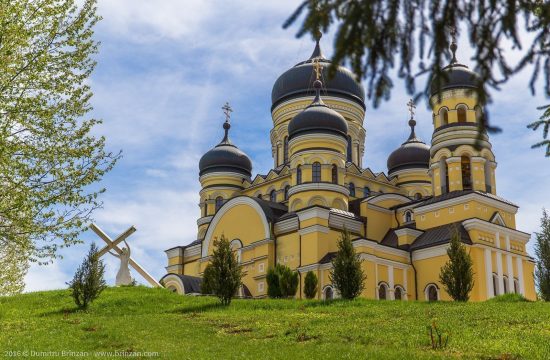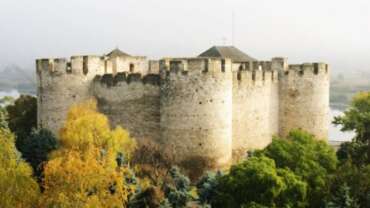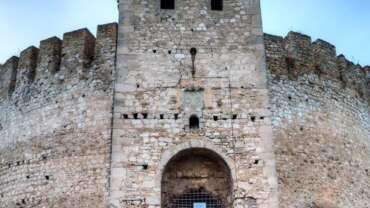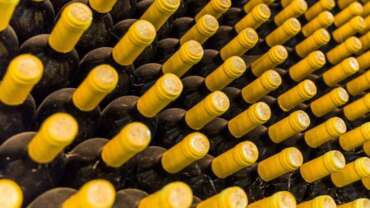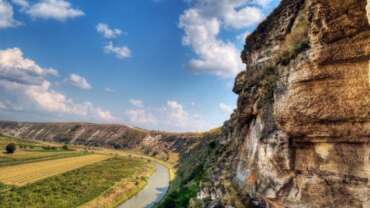Churches and Monasteries in Moldova
For the 2004 census, Orthodox Christians, who make up 93.3% of Moldova’s population, were not required to declare the particular of the two main churches they belong to. The Moldovan Orthodox Church, autonomous and subordinated to the Russian Orthodox Church, and the Orthodox Church of Bessarabia, autonomous and subordinated to the Romanian Orthodox Church, both claim to be the national church of the country. 2% of the population is Protestant, 1.2% belongs to other religions, 0.9% is non-religious, 0.4% is atheist, and 2.2% did not answer the religion question at the census.
Capriana Monastery
In a picturesque forest area, only 40km north – west of Chisinau, lies Capriana Convent – one of the oldest in Moldova (1429). For a long period of time it was the headquarters of Moldova’s bishop. It was founded by great Moldovan Rulers such as Stefan the Great. The chronicler Eftinie and one of the first poets of Moldova, Chiprian also lived here. Originally it was constructed completely in wood, later, in 1545, a church for the summer period called “Assumption of the Virgin Mary” was constructed from stone. In 1840 the “St. George” and in 1903 the “St. Nicolae” churches were built. The biggest convent library in Moldova was situated here in Capriana, it was endowed with precious gifts by different leaders. Closed and dilapidated during the post-war period, it was only reopened again in 1989, becoming a symbol of national revival.
The monastery can be visited daily. Near the monastery there are other sites worth visiting: the “Capriana-Scoreni” nature reserve, the oak-tree of Stefan the Great, and the oldest nature reserve in Moldova, “Codrii”.
Hancu Monastery
In 1678 in a forest at the source of the Cogalnic river (about 55 km West of Chisinau) the great High steward Mihai Hincu at request of his daughter founded a convent of nuns, which she entered. The convent was named Parascheva. The wooden churches and cells were often destroyed by the Tartar invasions during the XVIIth c., and the “St. Parascheva” monastery remained uninhabited. In 1835 a stone church was built in a Russian-Byzantine style for the summer period. Later, in 1841, came a church for the winter season.
From 1956 to1990 the convent was closed by the Soviet authorities, and instead it functioned as a sanatorium and a rest-base for the Health Ministry. In 1990, at the request of the local population the Hincu convent was reopened, becoming one of the most well arranged and most visited religious communities.
A lot of water springs surround the convent, one of them is mineralized. The convent can be visited daily. There are entrance fees and local guides and lodgings are available.
Hirjauca Monastery
It is situated 70 km north-west of Chisinau. The community of monks appeared in this area for the first time in 1740. Later some wooden churches and cells were built. The first half of the XIX c. was a flourishing period for the Hirjeuca Convent. It was surrounded by lakes, fountains and paths in a well designed park. In 1836 the summer “Resurrection” church was built in a similar classic architectural style as the Cathedral of Chisinau. Later came the winter church, “St. Spiridon”. In 1922 the interior of the latter is painted by the famous painter Pavel Piscarev. Hirjeuca Convent had an impressive library and a school for children of clerics. During the Soviet period the convent was closed, and functioned instead as a sanatorium. In 1993 the convent was reopened. In its grounds one can find the famous “Spring of Youth” which has curative properties. Visitors can make an excursion through the local forest, which is considered to be a valuable natural monument.
Japca Monastery
The Japca Monastery is situated on the shore of Nistru River at the distance of 10 km from Camenca. It is the only monastery from Basarabia which was never closed by the Soviet authorities.
The Japca area (160 km north the Chisinau) is very well known for its convent of nuns, the only one to remain open during the Soviet period. In XVIIth c. the convent community was similar to a fortress. The first recorded date of the hermitage goes back to 1693, when the monks lived in the inside cells and held religious services in the church, which was also inside caves. In 1770 the monks moved out to the current monastery. It was a period of a new construction style and increasing wealth. A rich library was founded too. At the beginning of the XIXth c. stone churches were built as well. The most important church of the convent was frequently rebuilt, thus now having three altars: Resurrection, Transfiguration, Crucifixion. Visitors are very impressed by the traditions that still prevail within the community. The convent can be daily visited.
Other interesting sightseeing opportunities include the Geo-paleonthological monument “Japca Rock”, a mineral water spring, Rascov landscape nature reserve and palaeolithic sites at Socola and Rascov. In Camenca town is the “Nistru” sanatorium.
Next to the interesting sightseeing of this place there is the Geo-paleonthological monument “Japca Rock”, a mineral water spring, landscape reservoir Rascov and paleolitical stations at Socola and Rascov. In Camenca town sanatorium “Nistru” is functioning.
Noul Neamţ Monastery (Chiţcani)
Noul Neamţ is an all-male monastery located in Chiţcani, near Tighina, geographically in Basarabia but controlled by the breakaway Transnistrian authorities. It is also known as Mănastirea Chiţcani, and it is the biggest religious complex under the control of Transnistrian authorities.
The monastery of the Holy Ascension in New-Neamts is situated in Basarabia, on the right shore of Dniester, at a distance of 14 km from the town of Toghina (Bender) and 6 km from the town of Tiraspol. The monastic complex rises grandly to the sky, being seen from the distance by the people coming near the village of Chitcani.Gallery
There’re four churches on the territory of the monastery. In center of it, the wonderful Ascension cathedral is situated. On its left there is the old church built in the honor of the Saint Hierarch Nicholas the Wonder-Worker. Opposite there is a refectory church, of the Ascension of the Holy Cross. The Dormition church is a congruous part with its five chapels completing the general view of the monastery.
The name (which means “New Neamţ” in English) signifies that the monastery is a successor of the Neamţ Monastery in Romania (medieval Moldavia).
The monastery was founded in 1861, when several monks from the Neamţ monastery left and founded Noul-Neamţ in Chiţcani. The founding of the new monastery was a protest against the measures taken in United Principalities of Romania to confiscate monastery estates and forbid the usage of Slavonic language in worship.
On 16 May 1962 Soviet authorities closed the monastery; the buildings became a hospital.
The monastery church was reopened in 1989, followed in 1991 by the Romanian-language school for Orthodox priests.
Rudi Monastery
Situated about 200km north of Chisinau, Rudi is one of the most interesting places to visit. One can find here pre-historic remains in a natural, 100m long cave, also an exceptional nature reserve, an ancient headland fortress (IV-III c. BC), two ring-shaped fortresses (IX-XII c.) called “Turkish Plate” and “Germanariu”, and a rural community rich in traditions. But the main object of visit in this area is one of the oldest monasteries in Moldova. The monastery has preserved the traditional monks’ way of life through the centuries and the “Holy Trinity” church built in 1777 is considered to be a representative sample of the old Moldavian religious architectural style. The church is situated in a beautiful natural setting in the valley of river Bulboana.
Saharna Monastery
The “Holy Trinity” Monastery of Saharna, situated about 110 km north of Chisinau on the right side of the Nistru, is considered to be one of the biggest centres for religious pilgrimages in Moldova. Here can be found the unique relicts of St. Cuvios Macarie, and on the top of the high cliff, according to a legend, there is a footprint of St. Maria. The legend says that a monk from the monastery (X-XII c., documentary XVII-XVIII c.) once saw the shining figure of Saint Maria on the top of a rock. When reaching that spot the monk saw a mark of a footstep on the ground. This vision was considered to be a divine announcement and evidence of the holy purity of this place. Near this spot a new wooden church was built and the “Holy Trinity” monastery founded (1777). Later the wooden church was replaced by a brick one built in an old Moldavian style, decorated with frescos. Meanwhile the community of monks expanded. The monastery can be visited daily.
An exceptional panoramic view of the numerous rocky hills and the forests around the small 16-km river, which runs down 30 cascades and waterfalls, is opened up to the traveler from the cliff-tops. Here there is also an important archaeological site with the remains from the Iron Age (X-VIII c. BC) and a Geto-Dacian headland fortress (IV-III c. BC), which has been preserved in a better condition than any other in Moldova.
Tipova Monastery
In Tipova on the rocky side of the Nistru river (about 100-km north of Chisinau), is the biggest Orthodox cave monastery in Moldova and in Eastern Europe. Long before the feudal state of Moldova was formed, a community of monks was established here. Some say that in the X-XII c. (according to others in the XVI-XVIII c.) some cells were dug inside the steep cliffs of the Nistru. In 1776 a prosperous period started when the monastery was divided into large parts, separated by massive columns. During the Soviet period the monastery was closed and destroyed. In 1975 the ruins of the Tipova monastery were protected by the State and in 1994 religious services resumed.
It is said that the wedding of our great Ruler Stefan cel Mare and his wife Maria Voichita was held in this monastery. Another legend says that the mythological poet Ortheus spent his last years on these hills and is buried in a nook of a waterfall. The monastery can be visited daily.
Tourists can visit the splendid path though the “Tipova” nature reserve. In ancient times (IV-III c. BC) a Geto-Dacian fortress stood in the grounds. Its remains are still visible.



